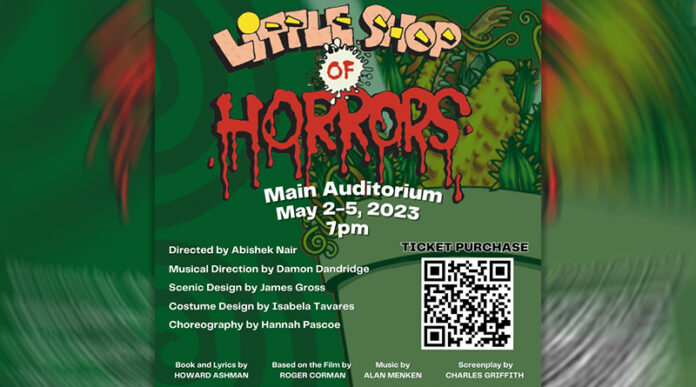By Aleen Anderias
UNIVERSITY CITY, SHARJAH—The musical Little Shop of Horrors is a critique of consumer culture in the United States during the 1950s after the post-industrial revolution, the American University of Sharjah professor designing the show’s costumes said April 25.
Asst. Prof. Isabela Tavares said that among the characters, Seymour, the protagonist, must decide whether he wants to continue to be the “underdog” or the “poor guy” where he must make a deal with Audrey 2, the antagonist, to earn money, prestige, and fame.
The show opens May 2 in the university’s Main Auditorium.
Tavares added that this is Hollywood culture at its “peak” and the fact that it’s a part of a musical is “an irony itself.”
“You can’t expect Little Shop of Horrors to be a serious musical because it’s a critique through the lens of comedy and is very satirical,” said Tavares.
According to Tavares, she was inspired by these concepts and how she enjoys the aesthetic of the 1950s and 1960s, which are “perfect” for the colors, patterns, and silhouettes that “”land well to the cultural aspects of that period.”
“I knew I wanted to stay true to that aesthetic while also informing the visual narrative of the characters,” said Tavares.
Tavares said she sourced most of the clothing for the musical from vintage stores, much of it from the 1950s.
Tavares noted that she and students working in the costume lab are making the skirts for the other characters in the musical, such as the Rockettes and Audrey.
According to Tavares, she purposefully designed the ensemble’s costumes as “subdued and distressed” since they are portraying children who live in the streets. But she added that she wanted the main characters to wear vibrant colors so they would “pop out” while the ensemble blend in with the setting.
Tavares added that the cast would not have many outfit changes during the musical because they are not strictly following the script.


















